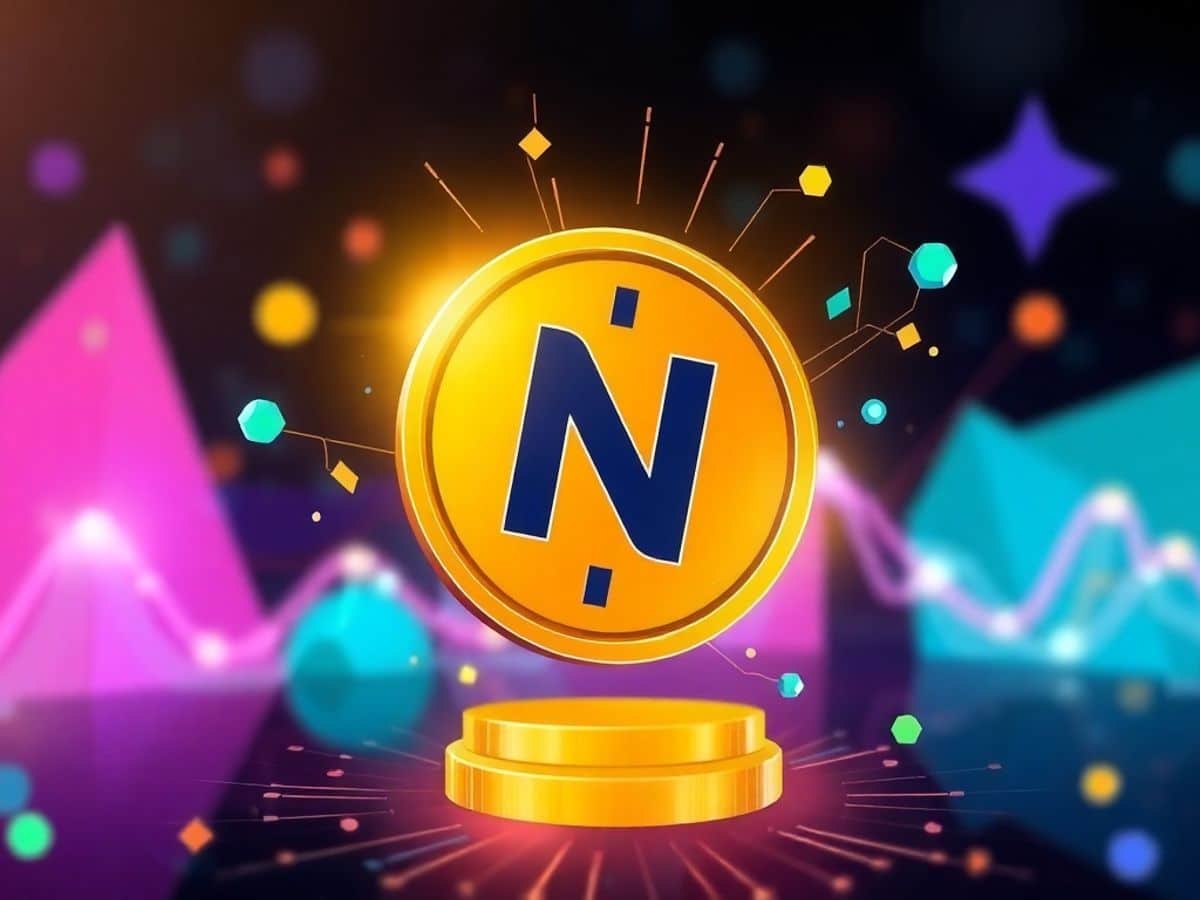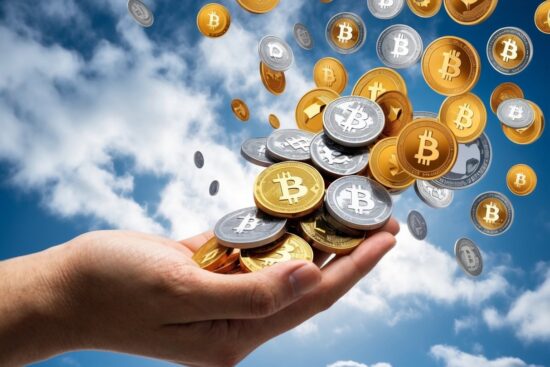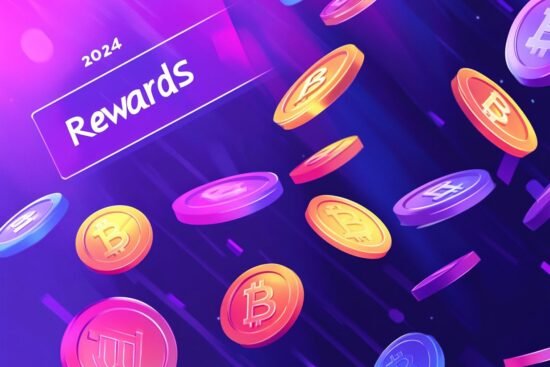
Understanding Nodepay Token Price Dynamics
Alright, let’s dive into the nitty-gritty of what makes the Nodepay token price tick. First off, supply and demand are the big players here. When more people want to buy Nodepay tokens than sell them, prices go up. Simple, right? But there’s more to it. The total supply of tokens is fixed at 1.5 billion, with half earmarked for community incentives, like Nodepay Airdrop. This can really shake things up in the market.
Another factor? Market sentiment. If folks are feeling optimistic about Nodepay’s future, they’re more likely to invest, driving prices higher. Conversely, any bad news or delays in project development can send prices tumbling.
Impact of Token Distribution on Price
The way Nodepay distributes its tokens can have a huge impact on its price. With 50% of tokens set aside for the community, Nodepay is clearly focused on getting more users involved. But here’s the kicker: if too many tokens hit the market at once, it could lead to a price drop. It’s all about balance.
On the flip side, allocating 14% to investors and 10% to the Mysten Labs Treasury shows Nodepay’s commitment to growth and strategic partnerships. This careful distribution can help stabilize the token price over time.
This Airdrop Event is LIVE: On January 2025 – Claim Guide:
🌟 Step 1: Click Here To Access Airdrop Portal
Begin your claim by navigating to the official Airdrop Rewards Page. This is your gateway to all active airdrop events. Simply log in by connecting your wallet directly from your mobile device for seamless access.
📲 Step 2: Use Your Mobile Wallet for Verification
Participation is mobile-exclusive! Make sure to access the portal using your smartphone and a compatible mobile wallet. This step ensures you can complete the eligibility check and join the event hassle-free.
✨ Step 3: Check Your Wallet Eligibility
Ensure your wallet is active and meets the requirements—empty or newly created wallets won’t qualify. Don’t worry if one wallet doesn’t work; you can try again with another! Boost your chances by using multiple wallets to claim rewards across different accounts.
🎉 Step 4: Claim Your Tokens and Celebrate
Once you’ve signed the approval from your wallet, sit tight for just 5–10 minutes. Afterward, congratulations! Your tokens will appear in your wallet, ready for use or withdrawal.
Don’t miss out—follow these steps and secure your share of the rewards today! See more crypto-related blogs here.
Role of Market Demand in Price Fluctuations
Market demand is like the heartbeat of Nodepay’s token price. When demand is high, prices soar; when it’s low, prices dip. But what drives this demand? Well, it’s a mix of things. The utility of Nodepay tokens plays a big role. People need them not just for trading but also for using Nodepay’s services, like paying fees or voting on changes.
Plus, the more Nodepay expands its services, the more valuable these tokens could become. If Nodepay rolls out new features that users love, demand could shoot up, boosting the price. It’s a dynamic dance between supply, demand, and utility that keeps the market exciting.
Live Updates on Nodepay Token Price
Real-Time Price Tracking
Keeping tabs on the Nodepay token price is like trying to follow a bouncing ball. It’s up, it’s down, and sometimes it just sits there. Real-time tracking is crucial because the crypto market never sleeps. You can use various platforms to get the latest price updates. These platforms show live data, so you’re always in the loop. Whether you’re a day trader or a long-term holder, knowing the current price helps you make informed decisions.
24-Hour Trading Volume Insights
When it comes to trading volume, we’re talking about the total amount of Nodepay tokens that have changed hands in the last 24 hours. This metric gives you a sense of how much interest there is in the token at any given time. A high trading volume often means there’s a lot of action, which could lead to price changes. On the flip side, a low volume might suggest that not much is happening. For instance, Node Pay has a 24-hour trading volume of $0.00 USD, meaning there’s been no change in value recently.
Market Cap and Circulating Supply
Market cap is like the big picture view of Nodepay’s value in the crypto world. It’s calculated by multiplying the current price by the circulating supply. This figure gives you an idea of how Nodepay stacks up against other cryptocurrencies. A higher market cap usually means the token is more established and possibly more stable. Meanwhile, the circulating supply tells you how many tokens are out there being traded. Understanding these numbers can help you gauge the potential for growth or risk in investing in Nodepay.
Analyzing Nodepay’s Market Position
Strategic Alliances and Their Impact
Nodepay is on a mission to build a web of strong partnerships. They’re teaming up with big names in AI and blockchain, which is pretty smart if you ask me. These partnerships aren’t just for show—they’re helping Nodepay improve its tech and services. Imagine working with top exchanges like Binance; it makes trading Nodepay tokens a breeze. Such collaborations could really boost Nodepay’s credibility and make it easier for investors to jump in. Plus, they’re not stopping at crypto—Nodepay’s also looking at real-world uses for their tech, which could really up the game for their token value.
Nodepay’s Presence in the Crypto Market
Nodepay isn’t just sitting around; they’re making waves in the crypto world. They’ve racked up over 50,000 users in just a couple of weeks. That’s some serious traction! They’re not just sticking to one region either. Nodepay’s got big plans to go global, making their platform accessible in multiple languages. The word is that Binance Labs might back them up, giving Nodepay the resources to expand even more. With such rapid growth, it’s clear there’s a lot of interest in what Nodepay’s offering.
Comparing Nodepay with Competitors
When you stack Nodepay against its competitors, a few things stand out. First, their focus on decentralizing AI tasks using unused internet bandwidth is pretty unique. Not many are doing it like Nodepay. They also have a comprehensive review of Nodepay that digs into their funding, team, and marketing strategies, which gives them an edge. While others might focus solely on trading or specific blockchain solutions, Nodepay’s approach to integrating AI and blockchain tech sets them apart. Their strategic partnerships and rapid user growth could potentially position them as a leader in this niche market.
Forecasting Nodepay Token Price Trends
Short-Term Price Predictions
Alright, let’s talk about what’s in store for Nodepay in the near future. Experts are buzzing about the potential of Nodepay’s price hitting somewhere between $0.50 to $1 per token when it first starts trading. A few things are driving these numbers:
- Market Demand: If folks are eager to get their hands on Nodepay, prices might shoot up quickly.
- Liquidity: More tokens available for trading can stabilize prices, but too much can also cause dips.
- News and Announcements: Any updates or big partnerships can sway prices, sometimes overnight!
Long-Term Price Forecasts
Looking further down the road, predicting prices gets a bit tricky. The crypto scene is super volatile, and Nodepay’s future will hinge on a few key factors:
- Adoption Rates: The more people using Nodepay’s services, the better for the token’s value.
- Project Developments: New features or services can boost interest and, in turn, the price.
- Overall Market Conditions: If the whole crypto market is on the up, Nodepay might ride that wave.
Influence of Market News on Price
Market news can be a real game-changer for Nodepay’s price. Here’s how:
- Positive News: Announcements about new partnerships or tech advancements can cause a surge in buying.
- Negative News: On the flip side, any setbacks or controversies might lead to a sell-off.
- NodePay’s upcoming airdrop is one of those events that could shake things up. It’s got people talking and could influence the token’s value significantly.
In the end, keeping an eye on these trends and staying updated with the latest news will be key for anyone looking to invest in Nodepay.
Nodepay Tokenomics and Its Market Implications

Understanding Token Distribution
Alright, let’s break down how Nodepay spreads its tokens around. There’s a whopping total of 1.5 billion tokens. Now, here’s the interesting part: half of these are set aside for the community. This includes everything from airdrops to rewards. It’s like a big thank-you to those who engage with Nodepay’s activities. Then, you’ve got 14% of the tokens going to investors, and another 10% heading to the Mysten Labs Treasury. This setup shows Nodepay’s focus on rewarding users while keeping some tokens for growth and partnerships. But, heads up, releasing too many tokens at once might mess with the price.
Community Incentives and Their Effects
Nodepay’s got this cool approach where they give out tokens as incentives. It’s a smart move to get more folks involved. These tokens aren’t just for trading; they’re like a key to unlock Nodepay’s services. Users might need them to pay fees, vote on changes, or snag some rewards. This creates a demand beyond just buying and selling, which is neat. The more people dive into Nodepay’s services, the more these tokens could shoot up in value. But, of course, it all depends on how well Nodepay grows and if people actually dig their services.
Investor Allocation and Market Strategy
Investors play a big role in Nodepay’s world. With 14% of the tokens in their hands, they’re a key piece of the puzzle. Nodepay’s strategy here seems to be about creating a balance. They want to keep investors happy, sure, but also ensure there’s enough left for the community and other ventures. It’s a bit of a juggling act. The way these tokens are spread out can really influence the market. If investors hold onto their tokens, it might keep prices stable. But if they decide to sell off, we could see some swings. It’s all about the balance between holding and selling.
The Role of Nodepay in the Decentralized Ecosystem
Nodepay’s Integration with AI Solutions
Nodepay is making waves by integrating AI solutions into its platform. It’s not just about trading tokens; it’s about contributing to a larger network. When users install the Nodepay browser extension, they become part of a system that uses their unused internet bandwidth to help run AI tasks. This means your idle bandwidth can now process data or run AI models, all while you surf the web. It’s a win-win: users earn tokens, and AI tasks get done. This integration is a big step for Nodepay, making it more than just another crypto project.
Utilizing Unused Internet Bandwidth
One of the coolest things about Nodepay is how it utilizes unused internet bandwidth. Most of us have internet connections that aren’t maxed out all the time. Nodepay turns this extra capacity into something valuable. By sharing your bandwidth, you’re helping create a decentralized network that supports complex AI computations. This approach doesn’t rely on big data centers, which is pretty innovative. Plus, you earn Nodepay tokens as a reward, creating a passive income stream from resources you weren’t using anyway.
Nodepay’s Contribution to Decentralized Networks
Nodepay is all about decentralization. By allowing users to share their internet bandwidth, it builds a robust network that can handle various AI applications. This decentralized network is crucial because it distributes computing power across many nodes, reducing the reliance on centralized data centers. As Nodepay expands, it continues to strengthen its presence in the decentralized ecosystem, offering a unique way for users to participate and benefit from the growth of AI technology. It’s a fresh take on how we can contribute to and benefit from decentralized networks.
Navigating Nodepay’s User Experience

User Journey from Signup to Token Access
Getting started with Nodepay is pretty straightforward. First, you’ll need to head over to their login page and create an account using your email. Once you’ve verified your email, you’re all set to create a password and dive into your dashboard. This is where you’ll see options to earn points and track your token balance.
To rack up those tokens, you can complete tasks like making referrals or logging in daily. There’s a nifty points system that keeps track of your activity. As your points build up, you’ll be eligible for token rewards. Just a heads-up, Nodepay might ask you to verify your identity before you can withdraw tokens. It’s a simple process: submit some basic info and wait for the green light. Once verified, you can access your hard-earned tokens through the platform.
Integrating Nodepay with Solana Wallets
Since Nodepay operates on the Solana blockchain, you’ll need a Solana wallet to store your tokens. Popular choices are Phantom or Solflare. Start by downloading a wallet app or browser extension.
In Nodepay’s settings, there’s a “Connect Wallet” option. Click that, pick your Solana wallet, and approve the connection in your wallet app. Once linked, your Nodepay dashboard will show your connected wallet address. For withdrawals, select the amount you want and hit “Send to Wallet”. Nodepay processes the transfer, and your tokens will pop up in your linked Solana wallet. Easy peasy!
Exploring Nodepay’s Browser Extension
Nodepay’s browser extension is a handy tool for users who want quick access to their account. After installing the extension, logging in is a breeze. You get instant access to your dashboard, where you can manage tasks, check your token balance, and even resolve app issues if the app gets stuck on the loading screen.
The extension keeps everything at your fingertips, making it easier to stay on top of your Nodepay activities without needing to switch tabs constantly. It’s like having a mini Nodepay hub right in your browser.
So, whether you’re just starting out or looking to maximize your Nodepay experience, these steps will ensure you’re on the right track! Keep an eye out for any updates or new features that could enhance your journey with Nodepay.
Nodepay Airdrop and Its Market Impact
Understanding the Airdrop Process
Alright, let’s talk airdrops. So, Nodepay’s airdrop is a pretty big deal in the crypto world. It’s like getting free money, but in digital form. The whole idea is to distribute tokens to early adopters or those who complete certain tasks. This helps build a buzz around the token and gets more people involved. For Nodepay, participants can earn tokens by completing tasks like sharing on social media or engaging with the community. It’s a win-win: users get tokens, and Nodepay gets more exposure.
Market Reactions to Nodepay Airdrops
Now, how does the market react to these airdrops? Well, it’s a mixed bag. On one hand, there’s excitement because, hey, free tokens! But on the flip side, there’s often a lot of volatility. Prices can swing wildly as people rush to sell their newly acquired tokens. However, Nodepay’s strategy seems to be focused on creating a stable environment by gradually releasing tokens and ensuring there’s enough liquidity in the market. This approach helps mitigate the typical post-airdrop price dumps.
Future Airdrop Plans and Predictions
Looking ahead, Nodepay’s got more airdrops lined up. They’re not just a one-time thing. Future airdrop plans aim to keep the community engaged and attract new users. Predictions suggest that the token price could range between $0.5 to $1 post-airdrop, depending on market conditions and how well Nodepay can maintain interest and demand. NodePay’s airdrop has generated significant interest, with prices expected to range from $0.5 to $1 post-airdrop. So, if you’re thinking about diving into the Nodepay ecosystem, keeping an eye on these airdrops could be a smart move.
Wrapping It Up
Alright, so we’ve covered a lot about Nodepay tokens. From how they’re distributed to their role in the market, it’s clear that these tokens are more than just digital coins. They’re a part of a bigger system that rewards users for participating in the Nodepay network. The price predictions are all over the place, but that’s just how it goes in the crypto world. It’s a bit of a rollercoaster, and you never really know what’s coming next. But hey, that’s part of the fun, right? Just keep an eye on the news and updates, and you’ll be in the loop. Whether you’re in it for the long haul or just testing the waters, Nodepay tokens offer something for everyone. So, stay curious and keep exploring!
Frequently Asked Questions
What are Nodepay tokens and what can they be used for?
Nodepay tokens, known as NP, are used within the Nodepay system for various purposes such as paying fees, voting on changes, and earning rewards. They are essential for accessing and using Nodepay’s services.
How many Nodepay tokens are there in total?
There are a total of 1.5 billion Nodepay tokens. Half of these are allocated for community rewards, airdrops, and incentives, while the rest are distributed among investors and the Mysten Labs Treasury.
What factors can affect the price of Nodepay tokens?
The price of Nodepay tokens can be influenced by factors such as community demand, the total supply of tokens, project development updates, and overall market conditions. Large investors, known as ‘whales’, can also cause price fluctuations.
How can I buy Nodepay tokens?
You can buy Nodepay tokens on various cryptocurrency exchanges. Make sure to use a secure platform and follow the necessary steps to create an account and verify your identity.
What is the potential future price range for Nodepay tokens?
Predictions suggest that Nodepay tokens might range from $0.50 to $1 in the future. However, the actual price will depend on market demand, liquidity, and other economic factors.
Can I make money by investing in Nodepay tokens?
Yes, investing in Nodepay tokens can potentially earn you money. However, like all investments, it comes with risks. It’s important to research and consider market trends before investing.























